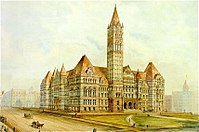
William Lyon Mackenzie was a Scottish Canadian-American journalist and politician. He founded newspapers critical of the Family Compact, a term used to identify elite members of Upper Canada. He represented York County in the Legislative Assembly of Upper Canada and aligned with Reformers. He led the rebels in the Upper Canada Rebellion; after its defeat, he unsuccessfully rallied American support for an invasion of Upper Canada as part of the Patriot War. Although popular for criticising government officials, he failed to implement most of his policy objectives. He is one of the most recognizable Reformers of the early 19th century.

The Upper Canada Rebellion was an insurrection against the oligarchic government of the British colony of Upper Canada in December 1837. While public grievances had existed for years, it was the rebellion in Lower Canada, which started the previous month, that emboldened rebels in Upper Canada to revolt.
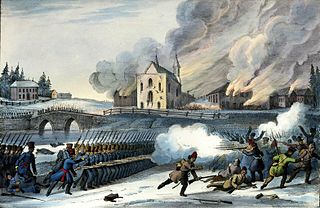
The Rebellions of 1837–1838, were two armed uprisings that took place in Lower and Upper Canada in 1837 and 1838. Both rebellions were motivated by frustrations with lack of political reform. A key shared goal was responsible government, which was eventually achieved in the incidents' aftermath. The rebellions led directly to Lord Durham's Report on the Affairs of British North America and to the Act of Union 1840 which partially reformed the British provinces into a unitary system and eventually led to the British North America Act, 1867, which created the contemporary Canadian federation and its government.

James FitzGibbon was a public servant, prominent freemason of the masonic lodge from 1822 to 1826, member of the Family Compact, and an Irish soldier in the British Army in Europe before and in the Canadas during the War of 1812 who received messages of warning from two Canadian folk heroes: Laura Secord (Ingersoll) and Billy Green.
Anthony Van Egmond was purportedly a Dutch Napoleonic War veteran. He became one of the first settlers and business people in the Huron Tract in present-day southwestern Ontario Canada. Van Egmond became an early contractor employed by the Canada Company to construct the original 74-kilometre (46 mi) road into the new settlement, allowing the entry of settlers for the purchase of company lands and further economic development. He eventually became a supporter of William Lyon Mackenzie and led a force of armed rebels in their unsuccessful skirmish at Montgomery's Tavern near Toronto on 7 December 1837, during the Upper Canada Rebellion.
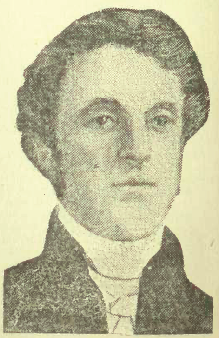
Henry Sherwood, was a lawyer and Tory politician in the Province of Canada. He was involved in provincial and municipal politics. Born into a Loyalist family in Brockville in Augusta Township, Upper Canada, he studied law and was called to the bar of Upper Canada in 1828. In 1838, he was appointed Queen's Counsel. Sherwood was part of the Family Compact, the inter-connected families of strong British and Loyalist sympathies which dominated the government of Upper Canada in the early years of the 19th century
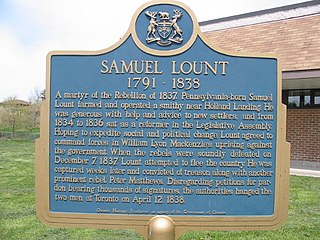
Samuel Lount was a blacksmith, farmer, magistrate and member of the Legislative Assembly in the province of Upper Canada for Simcoe County from 1834 to 1836. He was an organizer of the failed Upper Canada Rebellion of 1837, for which he was hanged as a traitor. His execution made him a martyr to the Upper Canadian Reform movement.

Captain Peter Matthews was a farmer and soldier who participated in the Upper Canada Rebellion of 1837.
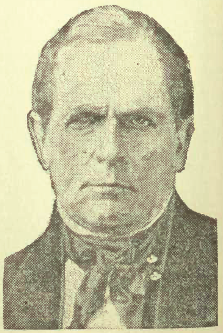
Thomas David Morrison was a doctor and political figure in Upper Canada. He was born in Quebec City around 1796 and worked as a clerk in the medical department of the British Army during the War of 1812. He studied medicine in the United States and returned to York in 1824 to become a doctor in Upper Canada. He treated patients and served on the Toronto Board of Health during the 1832 and 1834 cholera outbreaks and co-founded the York Dispensary. In 1834 he was elected to the 12th Parliament of Upper Canada, representing the third riding of York County as part of the reform movement. That same year he was elected as an alderman to the Toronto City Council and reelected the subsequent two years. In 1836, he served a term as mayor of Toronto.

John Rolph was a Canadian physician, lawyer, and political figure. He was elected to the Parliament of Upper Canada in 1824 to represent Middlesex County and was considered the leader of the Reform faction in the 1820s. In 1837 he helped plan the Upper Canada Rebellion, but acted as the government's emissary to negotiate a truce once the rebellion began. In the 1850s he was elected to the newly-formed Parliament of the Province of Canada, representing Norfolk County, and was appointed as Minister of Crown Lands and Minister of Agriculture. He founded several medical schools throughout his life, including the Rolph School, and incorporated new teaching techniques and medical practices into his lectures. His actions against rival medical schools decreased public confidence in the ability of medical professionals to regulate themselves.

William Botsford Jarvis was an important member of the Family Compact and Sheriff of the Home District. His estate in what was then York, Upper Canada, gave its name to Rosedale, Toronto. Jarvis Street was named for his cousin, Samuel.

John Powell was a Canadian politician who served as mayor of Toronto and played an important role in the Upper Canada Rebellion. Powell was a member of the "Family Compact," the small group of elite families that controlled the politics of Upper Canada in the first half of the nineteenth century. His father, Captain John Powell, was the son-in-law of General Æneas Shaw and his grandfather was Chief Justice William Dummer Powell. He was also a member of the Orange Order in Canada.
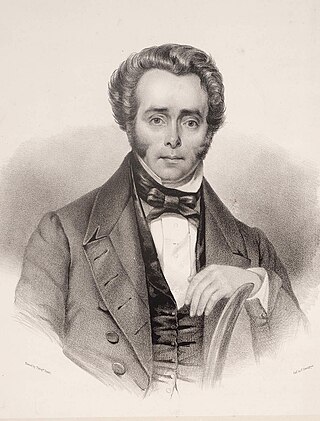
James Hervey Price was a Canadian attorney and political figure in Canada West. He was born and grew up in Cumberland, United Kingdom, and studied law at Doctors' Commons. He moved to Upper Canada in 1828 and became an attorney in 1833. He was appointed the city of Toronto's first city clerk in 1834 and the following year built a house north of Toronto that he named Castlefield. In 1836 he was elected as a city councillor for St. David's Ward in Toronto but was defeated the following year. Although he considered himself a Reformer, he did not participate in the Upper Canada Rebellion. In 1841 he was elected to the first Parliament of the Province of Canada, representing the 1st riding of York as a Reformer. He served as the commissioner of Crown lands from 1848 to 1851 when he was defeated in his reelection campaign for his seat in the Parliament. He withdrew from politics and worked as an attorney until his retirement in 1857. In 1860 he returned to Britain to Bath, and died in Shirley, Hampshire, in 1882.

The Patriot War was a conflict along the Canada–United States border in which bands of raiders attacked the British colony of Upper Canada more than a dozen times between December 1837 and December 1838. This so-called war was not a conflict between nations; it was a war of ideas fought by like-minded people against British forces, with the British eventually allying with the US government against the Patriots.
The history of Richmond Hill began when the First Nations came and settled in the area. With the Toronto Purchase, the city gradually expanded with new greenhouse industries and improved transportation infrastructure.
John Montgomery owned the tavern which served as a base for the rebels during the Upper Canada Rebellion. His establishment was the site of the Battle of Montgomery's Tavern.

The Children of Peace (1812–1889) was an Upper Canadian Quaker sect under the leadership of David Willson, known also as 'Davidites', who separated during the War of 1812 from the Yonge Street Monthly Meeting in what is now Newmarket, Ontario, and moved to the Willsons' farm. Their last service was held in the Sharon Temple in 1889.

The Reform movement in Upper Canada was a political movement in British North America in the mid-19th century.
Samuel Hughes (1785–1856) was a prominent member of the Children of Peace, a reform politician in Upper Canada, and the president of Canada's first farmers cooperative, the Farmers' Storehouse Company. After the Rebellions of 1837 he rejoined the Hicksite Quakers and became a minister of note.
The Types Riot was the destruction of William Lyon Mackenzie's printing press and movable type by members of the Family Compact on June 8, 1826, in York, Upper Canada. The Family Compact was the ruling elite of Upper Canada who appointed themselves to positions of power within the Upper Canadian government. Mackenzie created the Colonial Advocate newspaper and published editorials in the paper that accused the Family Compact of incompetence and profiteering on corrupt practices, offending the rioters. It is not known who planned the riot, although Samuel Jarvis, a government official, later claimed he organized the event. On the evening of June 8, 9–15 rioters forced their way into the newspaper offices and destroyed property. During the event, Mackenzie's employees tried to get passersby to help stop the rioters. Bystanders refused to help when they saw government officials like William Allan and Stephen Heward were watching the spectacle. When the rioters finished destroying the office, they took cases of type with them and threw them into the nearby bay.

